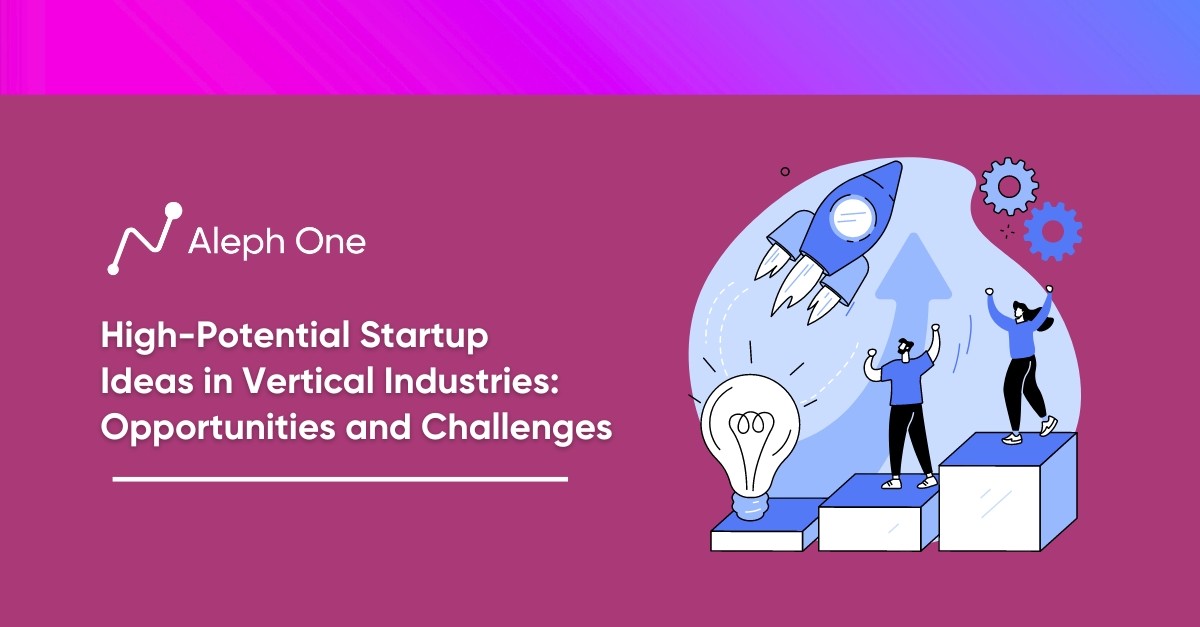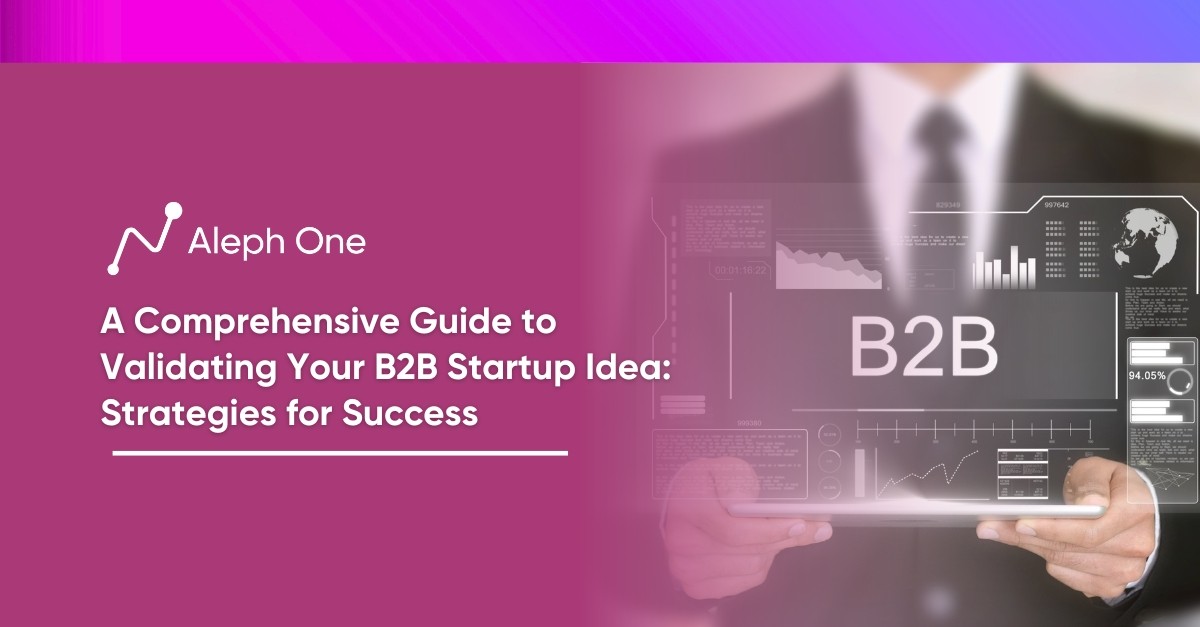Let’s work together to build something amazing. Share your project details and our team will reply to figure out the next steps to your success.

In a world once captivated by novelty and “disruption,” today’s successful startups have shifted their focus to substance over flash. This article will go into the truth behind “disruption” and highlights the importance of solving real problems for customers. Drawing on data from failed startups and lessons from successful ones, it emphasizes that sustainable growth, rather than novelty alone, should be the primary goal for new ventures. Moreover, it explores the hidden potential of established industries, where startups often overlook lucrative opportunities. Entrepreneurs can uncover “hidden gems” in unlikely places by analyzing customer pain points and emerging technologies. By leveraging innovation to address established human needs, entrepreneurs can build the next generation of high-potential companies at the intersection of technology and customer demand.

The Truth About “Disruption” – Why Startups Need Substance Over Flash
In the early 2000s, novelty and “disruption” were the rage. Venture capitalists poured billions into startups that promised to shake up industries with new concepts and technologies, leading to the dot-com crash. Today’s successful startups solve real problems for customers. Data shows that sustainable growth is the top priority for new ventures.
Sustainable Startups Aren’t Built on Novelty Alone
The startup world’s obsession with disruption has led many entrepreneurs to focus on creating something new rather than something valuable. But research shows that sustainable startups are not built on novelty alone. A study by CB Insights analysis of 101 failed startups found that 42% cited “no market need” as the primary reason for going under. Startups need to solve a real problem for customers.
Focus on Customer Experience
Some of today’s most successful companies were not the first in their industries. They simply offered a better solution to an existing problem. For example, Uber and Lyft were not the first ride-sharing companies. But by focusing on customer experience, they could scale where predecessors had failed. Airbnb was not the first vacation rental platform, but it prevailed by providing a wider range of lodging options and building a robust review system to establish trust.
Concept Must Meet Customer Needs
The myth of disruption also leads startups to prioritize growth over sustainability. But healthy growth is not about moving fast and breaking things. According to research from Startup Genome, the startups with the highest success rates are those that achieve product-market fit before aggressively scaling. They ensure their concept meets customer needs before spending heavily on marketing and expansion.
While an innovative idea may attract initial interest, startups need substance. Entrepreneurs should focus on solving significant problems, not just being new or different. They must verify product-market fit before scaling at all costs. And they should recognize that while “disruption” sounds exciting, sustainable growth is what matters. By providing real value to customers, startups can build for the long term.
The Hidden Potential of Established Industries: Where Startups Overlook $$$
New industries like cryptocurrency, virtual reality, and space travel lures many entrepreneurs. But established verticals that lack innovation often present the biggest opportunities. Startups can uncover major possibilities in unlikely places by analyzing customer pain points, emerging technologies, and demographic shifts.
MakeSpace – On-demand Storage
For example, moving and storage is an unglamorous industry that had yet to see much change for decades. Then MakeSpace emerged, offering on-demand storage and moving services through an app. They built a $100 million business by providing convenience and simplicity in a market that needed it.
Oscar Health – Tech-Driven Approach to Healthcare Insurance
In healthcare, Oscar Health saw that customer experience could have been better, and policies needed to be clearer. They applied a tech-driven approach to healthcare insurance, reaching a $3.2 billion valuation. Who would have thought an insurance startup could be so exciting?
Industrial Equipment
Even industrial equipment has potential. Acme Manufacturing builds devices critical for many businesses but last upgraded their technology or services a few years ago. A startup that provides modern IoT-enabled machines and predictive maintenance using AI could make huge inroads. The key is finding areas where demand grows, but innovation and customer experience should be addressed.
Barrier to Entry
Of course, the bigger the industry, the bigger the opportunity. But large, complex industries also mean higher barriers to entry. Startups must have deep expertise, resources, and patience to navigate regulations and effectively compete. The risk is higher, but the rewards can be massive, or those able to crack an established vertical,
Startups should look hard at established industries rather than being lured by flashy new concepts. With creativity and persistence, they can build solutions to address major customer pain points. Uncovering these “hidden gems” and making a real impact is the surest path to startup success.
The System Behind Startup Success: Frameworks to Spark Breakthrough Ideas
The most innovative startups don’t stumble upon their ideas by chance. They apply proven frameworks and methodologies to uncover opportunities. Three of the most effective ideation frameworks are problem inversion, future casting, and the innovation matrix.
Problem Inversion
Problem inversion flips conventional thinking to reveal key insights. For example, instead of asking how to improve the taxi experience, Uber asked what if you could request a ride with the tap of a button. This simple inversion led to a billion-dollar startup. Entrepreneurs can pick an industry or customer pain point and ask, “What if the opposite were true?” to find opportunities hidden in plain sight.
Forecasting Trends
Forecasting explores how trends may shape customer needs. It starts by identifying major trends, like an aging population, then visualizes how those trends will impact industries in 5-10 years. For example, the trend of remote work and desire for work-life balance could create opportunities for more flexible co-working and childcare options. Startups could then build solutions to meet those future needs.
Innovation Matrix
The innovation matrix combines two elements—technology on one axis and customer needs on the other—to identify the intersections where new ideas emerge. For example, the combination of AI and the need for personalized education could inspire an idea for customized digital tutoring. Or the combination of virtual reality and the need for remote collaboration could yield a concept for immersive virtual meetings. Analyzing where important technologies and customer needs intersect can yield groundbreaking concepts.
Uber, WeWork, and Anthropic
These frameworks have generated innovative startups across industries. Problem inversion led to Uber’s reinvention of transportation. Future casting inspired co-working startup WeWork to meet the needs of mobile workforces. And the innovation matrix spurred virtual tutor startup Anthropic to apply AI for customized education.
With practice, entrepreneurs can master these frameworks to develop high-potential startup ideas. But ideation is only the first step. Rigorous evaluation and testing are required to turn a good idea into a scalable business. With the right frameworks and process, startups can build solutions that customers need—even before they realize they need them.
Evaluating Startup Ideas for Maximum Potential
Not all startup ideas are created equal. Entrepreneurs must evaluate concepts based on key criteria to spot an idea with a billion-dollar potential. The first is market size. Ideas that target small niche markets are less likely to scale into large companies. Startups need a vast, growing demand to achieve massive success.
Growth Potential
Second, consider the growth potential. The most promising ideas solve problems that will become more acute over time, opening up new opportunities. They also tap into trends that are gaining more mainstream momentum. For example, as more commerce moves online, startups facilitating e-commerce have seen massive growth as more commerce moves online.
Competitive Advantage
Next, evaluate the competitive advantage. If an idea has an obvious solution that many companies can easily replicate, it likely won’t lead to a highly valuable company. The best ideas provide a unique, defensible solution to a problem. They also have a flexible concept that can pivot as needed to stay ahead of competitors.
Scalability
Scalability is another key factor. An idea that requires intensive human labor and resources to grow will struggle. The most scalable ideas leverage technology, networks, and other mechanisms that allow exponential growth with minimal incremental cost. Software and digital services are common examples.
Look at Major Trends
Billion-dollar startups often tap into significant trends and have ideas flexible enough to evolve over time. Facebook started as a simple college social network but pivoted to become a global platform. Uber began as a luxury black car service but scaled to become the world’s largest ride-sharing network. Both companies tapped into the growing trends of online connectivity and on-demand services.
To evaluate an idea, consider if it checks the boxes across market size, growth potential, competitive advantage, scalability, trends, and flexibility. An idea that fulfills all these criteria has the best chance of becoming a high-potential startup. With a systematic evaluation process, entrepreneurs can make smarter decisions about which ideas are worth pursuing and which may be better left on the drawing board. The ability to spot ideas with billion-dollar potential is what separates successful founders from aspiring entrepreneurs.
Turning Opportunity into Reality: The Playbook for Launching a Hot Startup
Developing a great idea into a thriving startup requires more than creativity. It demands a systematic process to build a minimum viable product, test key assumptions, secure funding, scale the business, and gain momentum.
Construct an MVP
The first step is constructing an MVP, a basic product with just enough features to be usable by early customers. The MVP allows you to gather feedback, validate your idea, and make needed changes before committing major resources. Survey potential customers, analyze their responses, and incorporate that input into your initial design.
Test Your Idea
Next, test your riskiest assumptions to determine if there are any major flaws in your concept. For example, will customers buy your product, and at what price? Are there enough customers to scale the business? Will key partnerships or resources be available? Conduct experiments to validate or invalidate your assumptions. Be willing to pivot if needed.
Validate Your Assumptions
With an MVP and validated assumptions, you can start building a scalable business model. Focus on a niche market to establish a foothold before expanding. Look for ways to create a sustainable competitive advantage through proprietary technology, data assets, or strategic partnerships. Build a financial model to project costs, revenues, profit margins, and key milestones.
Secure Funding
Then secure funding to fuel your growth. Self-funding, crowdfunding, angel investment, venture capital, and business loans are all options. Choose the right path based on your needs and risk profile. With funding, scale your startup by optimizing critical metrics like customer acquisition cost, lifetime value, and churn rate. Expand into new customer segments and distribution channels. Continue improving your product to keep customers engaged.
Launching a startup is challenging, but by following a systematic process, entrepreneurs can turn a high-potential idea into a fast-growing company. Do you have an innovative concept that could transform an industry? With a strategic approach, you can make that opportunity a reality.
The Industries of the Future: Where Startups Will Find Their Next Big Hits
Emerging technologies are enabling new possibilities across established industries. In the coming years, startups will find major opportunities in verticals undergoing rapid change.
Healthcare
Healthcare is an area primed for innovation as populations age and technologies like AI and robotics advance. Startups focused on telemedicine, personalized medicine, and digitizing healthcare data are poised for growth. Transportation and logistics will also be impacted by autonomous vehicles, drone delivery, and other new mobility options. Startups developing technology and services around self-driving cars, smart cities, and optimized routing have potential.
Education
Education is evolving with the rise of digital learning and alternative credentialing. Startups that offer interactive online courses, skills-based training programs, and tools for recruiting and evaluating talent will be in high demand. Similarly, the future of work is changing with more freelancing and remote jobs. Startups enabling on-demand work, collaboration, and the gig economy are well-positioned.
On-demand Services
On-demand services are also gaining more mainstream interest across verticals like food delivery, streaming media, and online shopping. Startups that can provide instant, personalized, and seamless on-demand experiences have an opportunity to scale. Other areas like sustainable energy, space travel, and biotech are also ripe for high-growth startups over the next decade.
Leverage Tools Like AI and Robotics
While emerging technologies open new possibilities, human needs remain largely the same. The startups of the future will still solve fundamental problems around health, education, work, transportation, and more. But they will leverage new tools like AI and robotics to provide services in faster, more customized and compelling ways.
Be at the Intersection of Emerging Tech
Over the next 3-5 years, the hottest startup opportunities will be at the intersection of emerging tech and established human needs. Entrepreneurs should look for areas where they can apply new innovations to improve how things are done today fundamentally. With the right combination of foresight and problem-solving, startups can build the next generation of high-potential companies.
FAQ
Can you share more examples of successful companies who were not first in the industry but managed to provide better solutions to an existing problem?
An example of a successful company that wasn’t the first of its kind is Paypal. When it was launched, numerous online payment systems were already in place. However, Paypal transformed the industry by building an easily integrated payment processor for eBay users. This prime positioning and focus on the user experience catapulted the company above its competition, and it remains a leader in its sector today. Similarly, Netflix was not the first movie rental service, but it transformed the industry by introducing a subscription-based business model and eventually streaming services which were then non-existent.
In the context of startups overlooking established industries, can you explain how they can navigate regulations and effectively compete with the use of creative and persistent solutions?
In navigating regulations and competition in established industries, startups can rely on innovation as a key differentiator. They must thoroughly understand the industry’s regulatory environment to ensure compliance, which can also be used as a competitive advantage. For example, financial technology startups can offer creative solutions like seamless digital transactions while ensuring adherence to local and international banking regulations. This blend of innovation and compliance can give these startups an edge over traditional banks that may be slower to innovate.
Could you further illustrate how the frameworks like problem inversion, future casting, and innovation matrix can be applied to various types of startup ideas?
Applying these frameworks can vary across different startup ideas. For instance, in applying problem inversion in the healthcare industry, instead of focusing on providing more hospital beds, the focus could be on keeping patients healthy and out of hospitals, sparking the creation of preventive care startups. By future casting, if we envision a more nomadic population, startups could develop concepts for portable housing options or a global leasing platform. Using the innovation matrix, the integration of blockchain technology (in demand) and a need for trust and accountability in transactions (customer need), could result in creating a startup focused on transparent and accountable financial services.
Get the latest news and updates from Aleph One in your inbox.



